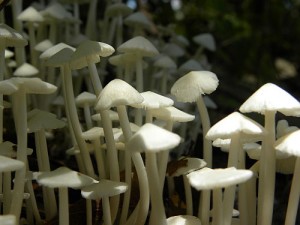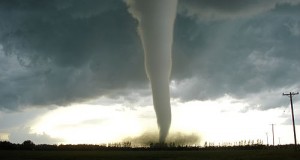Please read this series of articles together to make sense of the logic and information contained within it. The premise article (Part 1) is an important introduction which explains the reasoning for the inclusion of food sources in an extreme survival section. Ordinarily the most important parts to a survival plan are derived from the basic rule of 3’s formula:
- One can survive 3 minutes without air
- One can survive 3 hours without protection from exposure
- One can survive 3 days without water
- One can survive 3 weeks without food
Use these guidelines to understand the basic risk assessment formula, and adjust accordingly to your specific needs.
 In an extended survival scenario, food will become a primary concern, especially when attempting to cross large sections of land or water, which could take weeks or months.
In an extended survival scenario, food will become a primary concern, especially when attempting to cross large sections of land or water, which could take weeks or months.
In this article we will discuss some of the normal look-alike plants and edibles in the wilderness, which could be a major concern. Many dangerous plants are look-alikes of harmless plants and can lead to extreme danger and even death in many cases. If in doubt, you should always avoid consumption of any plant.
Queen Anne’s Lace
Queen Anne’s lace is a carrot-family distant cousin of the hemlock and is edible, but because of its incredibly close resemblance to the hemlock, it should be avoided unless you can be absolutely sure that it is not dangerous. The flowers bear a remarkable similarity to the hemlock, and while the leaves are noticeably different and the colorations can be a standard indicator, without extensive experience, it’s too dangerous to eat a plant you cannot be sure of when in the wild, especially with so many available that are edible.
Hemlock typically grows three to eleven feet tall and looks like thin, branched trees at its highest levels. The flowers have petals that seem to form in a slightly rounded and down sloping way like an umbrella. The lower parts of the stem can have streaks of darker purple and red colors, as well as a spotting of the same. The leaves have a fern appearance but are shiny and have a distinct old smell to them. Water hemlock also has some lookalikes, but it is very easily identifiable by the roots and the spindly appearance of the plant as well as the long skinny jags of leaves it produces.
Bur and wild chervil are two varieties of plants that may not be dangerous in the slightest, but they are also very close in appearance to the dangerous hemlock. Typically there are not the purple and reddish streaks or spotting present in the stem systems. Hairs at the stem to leaf joint may give the plant away as a non-hemlock; the plant tends to be a smaller size in total, and the leaves tend to be a bit less shiny and not quite as bright in coloration, though that does not mean you are safe if these characteristics are present.
Fox Grapes
Canadian moonseed can often be mistaken as a vine of grapes, but they are poisonous to humans. Found in Eastern Canada and the United States, these fox grape-resembling fruits can easily be a mirage of sorts to a weary traveler in a survival situation. The inside seed is shaped like a crescent; if you start to ingest a fox grape and realize quickly that the flavor is disturbingly bad, there is a good chance it is a moonseed instead, and that you could be removing poison from your mouth for a while.
Cattails
Blue flag and yellow flag are dangerous look-alikes to the cattail. It looks almost identical to the cattail with the obvious exception of the cattail being the only one that has a brown head in the seed area.
Strawberries
Indian strawberry is an almost exact replica of the field strawberry we have all grown up eating, and while some say it’s harmless, there are cases which show that it has a dangerous poison, and at minimum the ability to cause frequent allergic reactions. The only real tell tale sign which separates the two types of “strawberries” is the real and edible ones have white flower blossoms, whereas the “dangerous” ones have yellow flower blossoms. These grow in two thirds of the U.S. and Canada.
Wild Garlic
A spring garlic look-alike is the daffodil, which can be disruptive at best and deadly at worst. The difference is the smell of the plant, as the daffodil doesn’t have any of the characteristic garlic smell and should be avoided. As a side note, garlic doesn’t tend to have quite such lovely flowers.
Mushrooms
Mushrooms are incredibly vast in their classifications and variations, and as such, should be paid special attention to. If you are looking at potentially eating mushrooms in a wilderness scenario without extensive identification experience, then you are waging a risk that cannot possibly be countered. For all the varieties of mushrooms, there are just as many horror stories associated with basic misclassifications leading to death or bad sickness.
The all-encompassing little brown mushroom probably accounts for more issues to a mushroom seeker than any other mushroom class. Unfortunately, with a vast majority of the little brown mushroom varieties, there are several which are deadly or dangerous amongst an ocean of safe ones. They are very difficult to identify, especially in the field. It’s a hard thing to ask a mushroom lover to do, but in the field, avoid these mushrooms when selecting what to consume, as it is just too risky to eat something you cannot be sure of.
These and many other edible plants and mushrooms are mimicked by poisonous plants. It cannot be said enough that food in a survival situation is a secondary concern, and that avoidance of danger is a primary one: do not eat plants which cannot be identified with complete accuracy at all times.
When in a survival situation and in need of food for energy, be sure that you know the localized plant life so you can make responsible decisions and identifications of the foods you have access to. This will guarantee that you are not increasing your chances of death of seriously debilitating illnesses.
©2011 Off the Grid News
 Off The Grid News Better Ideas For Off The Grid Living
Off The Grid News Better Ideas For Off The Grid Living



